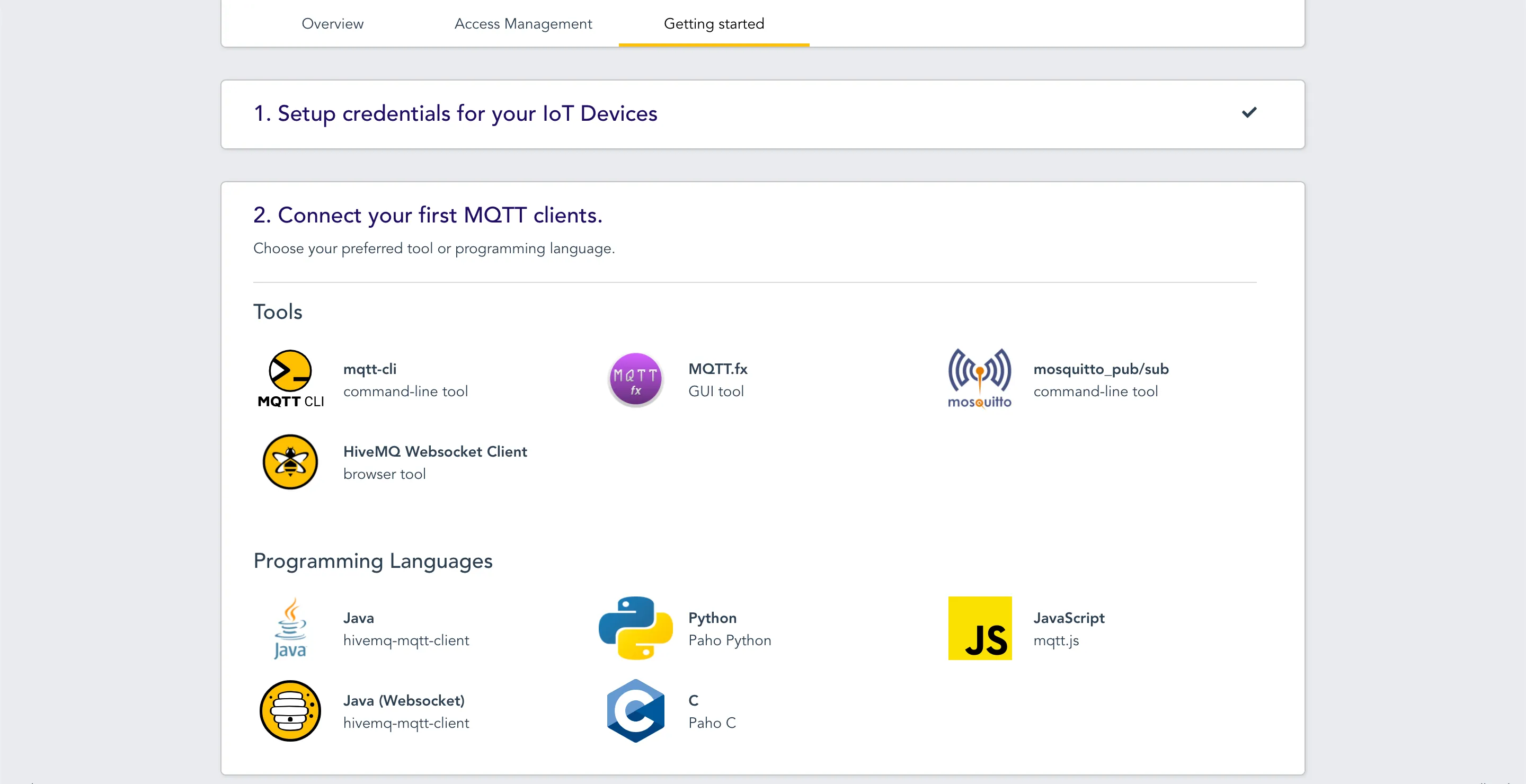Getting Started With HiveMQ Cloud Using Predefined Example Projects on GitHub
Starting in a new area can be challenging and overwhelming and one hardly knows where to start. When looking for libraries to use, it would be easier to get a completed code-project in your programming language than to start from scratch. We want to provide an easy entry into MQTT, because it is the core concern of HiveMQ to provide you with everything you need to get started easily and quickly. Our goal is to make MQTT accessible for everyone. For this purpose, we created ready-to-go example projects on GitHub, making it easier than ever to connect to a HiveMQ Cloud Cluster.
Easy to Follow Getting Started with MQTT Guides
HiveMQ Cloud has been providing you with easy to follow getting started guides, that guide you through connecting an MQTT Client, subscribing to topics and publishing data.
 These guides already provide starting points for a few programming languages and tools. In addition to the existing, beginner-friendly guides, we now created starting points for many major programming languages on how to use MQTT. This makes the life of HiveMQ Cloud users even easier, since now you can clone a repository instead of starting a project from scratch on your own. These public repositories are hosted on GitHub in our HiveMQ Cloud organization.
These guides already provide starting points for a few programming languages and tools. In addition to the existing, beginner-friendly guides, we now created starting points for many major programming languages on how to use MQTT. This makes the life of HiveMQ Cloud users even easier, since now you can clone a repository instead of starting a project from scratch on your own. These public repositories are hosted on GitHub in our HiveMQ Cloud organization.
Example Projects for Many MQTT Client Libraries
The HiveMQ MQTT Client is our own MQTT 5.0 and 3.1.1 compatible and feature-rich high-performance Java client library with different API flavours and backpressure support
Eclipse Paho provides libraries for many languages, so far we created starting projects for 4 of them:
MQTT.js is a JavaScript MQTT library, that can be used to implement MQTT into node.js or webbrowsers
Dart provides a client-optimized language for fast apps on any platform MQTT.DART
These example projects provide an easy start into MQTT and explain the basic MQTT functionality:
Connecting MQTT clients to your HiveMQ Cloud cluster using credentials, that you create yourself
Subscribing to topics: receiving all messages that are sent to this topic
Publishing data: sending messages to topics using the MQTT protocol
For further information on the functionalities of MQTT, download our MQTT Essentials guide.
All of these example projects are structured similarly and have a README, that explains exactly how to use the repository and what functionality it provides. They are made to be as simple as possible and allow starting to use MQTT with an already finished code, that only needs to be supplemented by your credentials that you create when starting your HiveMQ Cloud cluster. After cloning a repository into your local IDE, simply follow the instructions in the mentioned README to get started.
Unlock the full potential of MQTT with HiveMQ Cloud Starter, a complete MQTT platform ideal for testing and small-scale production! Begin your free trial now and enjoy unlimited connections, 99.95% uptime SLA, 24/7 support, data streaming integrations, and more.
Need help?
If you have questions, reach out to our community forum. If you find there is something missing, or a programming language is missing reach out to us.
HiveMQ Team
The HiveMQ team loves writing about MQTT, Sparkplug, Unified Namespace (UNS), Industrial IoT protocols, IoT Data Streaming, how to deploy our platform, and more. We focus on industries ranging from energy, to transportation and logistics, to automotive manufacturing. Our experts are here to help, contact us with any questions.
